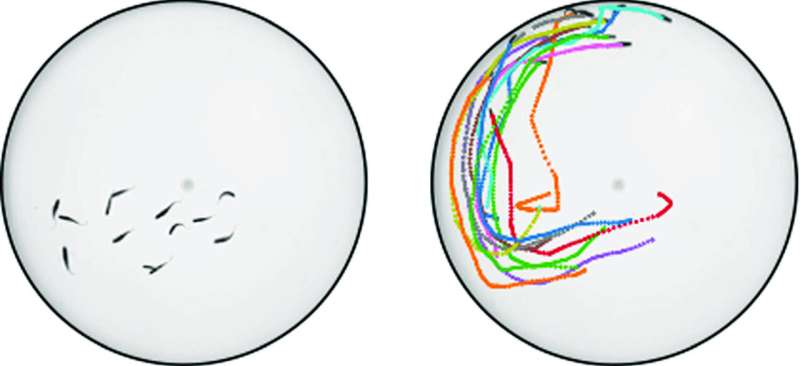
Active systems display a wide range of complex and fascinating behaviors, many of which are not yet fully understood. Found on scales ranging from microbes and self-propelling particles to large groups of fish, birds, and mammals, they are made up of many individual parts, which each convert energy from their surroundings into motion.
Through new analysis published in The European Physical Journal E, Antonio Romaguera and collaborators at the Rural Federal University of Pernambuco, Brazil, have gained deeper insights into the collective motions of schools of zebrafish: active systems in which multiple fish can collectively move in the same direction. The team’s discoveries could help researchers to better understand the unique properties of active matter, and how complex behaviors emerge and evolve on different scales.
Individually, zebrafish enhance the efficiency of their movements through sporadic bursts of their tails, followed by longer periods of coasting. When swimming in large groups, these fish coordinate their sporadic motions as they communicate with each other, leading to complex and interesting patterns.
Among these patterns are “polarized groups,” which emerge when groups of fish within the school swim in the same direction. Using mathematical relationships named “polarization time series” (PTSs), researchers can describe how these collective motions will evolve over time.
In their study, Romaguera and his collaborators examined this behavior in a group of zebrafish confined in a circular tank. As they observed the fish, they discovered a distinctive pattern in the PTS, which varied depending on how crowded the tank was.
As lower densities of zebrafish, the team found that the PTS became “multifractal”: meaning that polarized groups within the same group of fish exhibited different degrees of complexity structure over different scales. Yet as higher densities, the PTS instead became “monofracta”‘—displaying uniform behavior across different scales.
The team of researchers now hope this discovery could deepen our understanding of how active systems behave across a wider range of scenarios.
More information:
Antonio R. de C. Romaguera et al, Multifractal fluctuations in zebrafish (Danio rerio) polarization time series, The European Physical Journal E (2024). DOI: 10.1140/epje/s10189-024-00423-w
Citation:
Investigating collective motions in schools of zebrafish could deepen understanding of active systems (2024, June 11)
retrieved 29 June 2024
from https://phys.org/news/2024-06-motions-schools-zebrafish-deepen.html
This document is subject to copyright. Apart from any fair dealing for the purpose of private study or research, no
part may be reproduced without the written permission. The content is provided for information purposes only.




